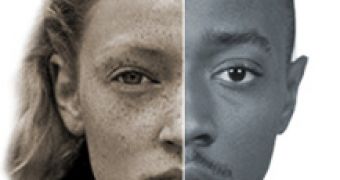No matter to which culture human beings belong, they tend to react similarly to many things. Most people hate spiders and snakes, and consider some other beings sexy, feminine or masculine, and totally dislike certain smells. All these are an inheritance we got from our remote past.
Everything that's 'rotten' disgusts us because we have learned to generate negative reactions to everything that would be harmful for our own survival. Rotten food can cause diseases, and by giving us nausea, we diminish the risks. But for a cockroach, the rottenness is attractive, as these insects eat rotten stuff. The repulsive smell does not belong to the molecules per se, but it is generated in our brain.
Another instinct inherited from our ancestors seems to be our ability to feel by smell the compatible partners. Experiments proved that females prefer men with a genetic pool as differently as possible from their own, thus they are attracted by these men. The more different the genes are, the stronger and fitter the child will be, being more resistant to infections. Animal breeders know that by mixing different breeds, they achieve new, improved breeds.
Of course, this is not conscious. We do not say we like or love somebody for his/her smell. In the end, love has the role of further transmitting good genes. This sensation of 'feeling good' has the role of perpetuating the species.
Scientists discovered that beauty is a very old stimulus, universal and strong, just like hunger or pain.
In the primitive hunter-gatherers society, the only sugar source were ripe sweet fruits. The prehistoric man got addicted to the sweet taste, which provided a good source of calories. But now, in a sedentary society, without food shortages, sugar has become a "white poison".
Researchers say beauty is just like sugar. Beauty standards are the same everywhere: round hips and breasts, thin waist, full lips, big eyes, delicate facial traits (thin nose, small jaw). All these traits are due to estrogen, the female fertility hormone. Today, fertility is manipulated through contraceptives methods.
But in the primitive society, men had to detect the fertility signs from the look of the females. Today, they do not have the same relevance, as they do not signal fertility and reproductive capacity, but they are still deeply rooted in our brain.
Studies tested people with computer made faces of "superwomen" (face with exaggerated feminine traits) and "supermen" (with exaggerated prominent eyebrows, facial hairiness, and large jaws). Men clearly preferred the "superwomen" faces. But women had a very specific reaction. Those found during ovulation (the peak of female fertility during the menstrual cycle) tend to choose the "supermen" faces, betraying high testosterone levels, while in the rest of the menstrual cycle they prefer men with more effeminate traits, which in their subconscious stand for a loving, careful and affective partner, a better father for their children.
At first sight, we are attracted by the physical beauty on a partner, but what is really important is the way he/she thinks, feels, and acts, his/her personality, intelligence, charm, and creativity. All these are 'products' of the brain. Some say our big brain evolved through sexual selection. Cultural manifestations (like music, poetry and dance) offer rich information about their creator. They are meant put a certain person in the spotlight, that is get the attention of its social group but especially that of the opposite sex.

 14 DAY TRIAL //
14 DAY TRIAL //